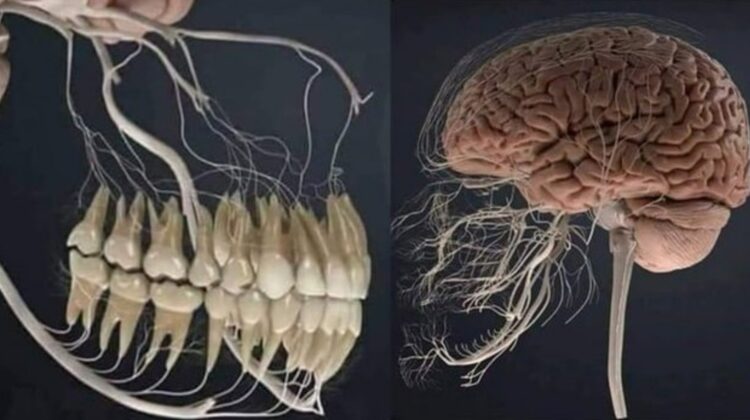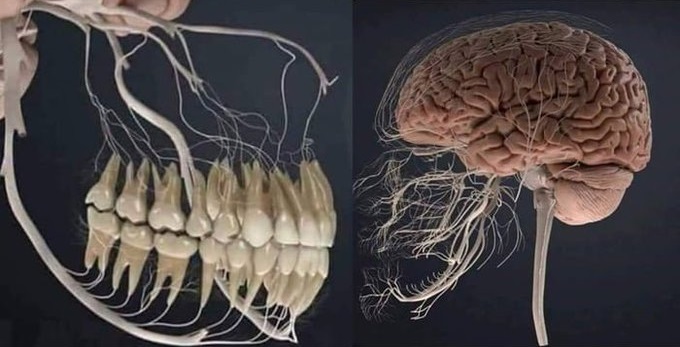
Have you ever noticed that a throbbing toothache can sometimes morph into a full-blown headache? It’s not just your imagination! This common occurrence has a fascinating anatomical explanation, all thanks to a crucial nerve called the trigeminal nerve.
The Trigeminal Nerve: Mastermind of Facial Sensation

Imagine a spiderweb of nerves blanketing your face. That’s essentially the trigeminal nerve, the largest sensory nerve in your head. It branches out like a tree, sending tiny tendrils to gather sensations from your teeth, gums, scalp, eyes, nose, and even the muscles you use to chew.
Tooth Trouble, Head Trauma: Same Nerve, Different Story
Now, here’s where things get interesting. When you have a toothache, the trigeminal nerve dutifully relays pain signals from your chompers to your brain. But because the trigeminal nerve also carries signals from other facial areas, including your head, sometimes the brain gets confused.
Think of it like a faulty electrical circuit. When the “toothache” signal is overwhelming, it can spill over onto other branches of the trigeminal nerve, creating the sensation of pain in your head, neck, or even behind your eye. This is why a throbbing tooth can sometimes feel like a full-blown migraine.

Visualization: Seeing the Connection
This complex interplay between nerves and pain can be hard to imagine. But thanks to modern medical visualization, we can actually see it in action. Check out this image:
The red areas show the path of pain signals from a toothache radiating to other parts of the face and head. It’s like a visual map of how that tiny tooth can trigger a big headache.
Beyond Toothaches: The Trigeminal Nerve’s Reach

The trigeminal nerve’s influence extends far beyond toothaches. It also plays a role in other facial sensations like:
- Temperature: Feeling a cool breeze on your cheek or the heat of the sun on your forehead.
- Touch: The gentle caress of a loved one or the prick of a pin.
- Taste: Savoring the sweetness of chocolate or the tang of a lemon.
Even some types of headaches, like migraines and cluster headaches, are thought to involve the trigeminal nerve.
Next Time Your Head Throbs, Remember the Trigeminal Nerve
So the next time you grapple with a nasty toothache that morphs into a headache, remember the trigeminal nerve. It’s a complex and fascinating network that keeps our faces feeling and functioning, and sometimes, in its own unique way, it can also be the source of our discomfort. But understanding its role can help us appreciate the intricate symphony of signals that keeps our bodies in tune.

Leave a Reply